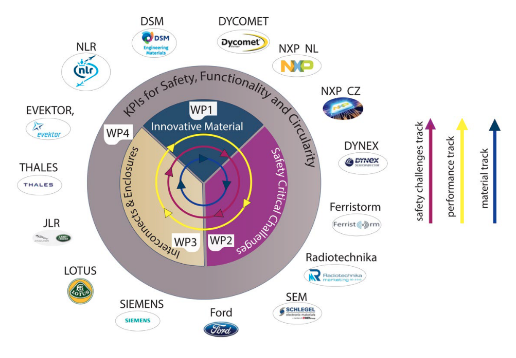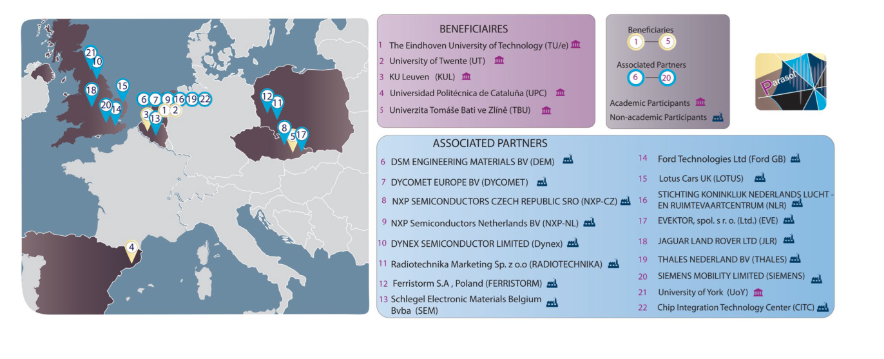The consortium groups six hiring Universities that are leaders in the management of Electromagnetic Interference (EMI), Material Engineering, Sustainability Management, and System-Safety Engineering.
The PhDs will be trained to work in multi-disciplinary and multi-cultural teams, including a Safe and Sustainable-by-Design (SSbD) framework – a holistic approach that integrates the safety, circularity, energy efficiency, and functionality of materials, products, and processes throughout their lifecycle – into the design of innovative shielding solutions for mobility.

PARASOL Key Objectives
Schlegel is impressed by and fully supports the program’s key objectives, which are to:
1. Investigate the potential of cold spraying for generating EM shielding coatings on polymers.
2. Develop neat methods for material characterization covering a large frequency band (100MHz-10GHz) to measure the complete constituent without modifying the material under test.
3. Develop, and compare several SE characterization methods to characterize the shielding properties of materials at very low frequencies.
4. Develop an active shield method to increase the robustness and immunity of PCB with safety-critical applications such as capacitive touch-based control applications that are increasingly used on board and are especially sensitive to harsh EM fields and other parasitic environmental effects like temperature drifts and humidity.
5. Further the understanding of onboard shielding for power electronics and provide tools for engineers to optimize this shielding.
6. Develop a characterization method to measure the absorption of multiple materials under different EM conditions.
7. Investigate the shielding effectiveness of real complex 3D structures like boxes, enclosures, and (parts of) cars, planes, or ships.
8. Develop an accurate measurement procedure to measure the energy exchange through the shield of a cable.
9. Develop more accurate shielding metrics, modeling, and measurement techniques that will allow the real-world shielding effectiveness of enclosures with contents to be quantified.
10. Address the fundamental concept of shielding achieved by reflection and absorption.
11. Develop a layer-by-approach for generating embedded and local 3D embedded shielding solutions for Integrated Chips using the printability properties of some electromagnetic shielding polymer formulations.
12. Investigate time-domain techniques intended to assess the electric and magnetic field shielding effectiveness simultaneously.
Schlegel Electronic Materials is aligned with PARASOL’s goal to achieve a breakthrough in the design of innovative shielding solutions for mobility where the SSbD approach has been managed at its core: for cars, trains, planes, and ships.
Read full details about the PARASOL program here.

